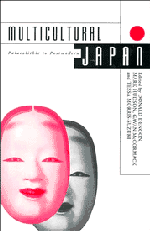Book contents
- Frontmatter
- Contents
- List of Figures and Tables
- List of Contributors
- Abbreviations
- Introduction
- Part 1 Archaeology and Identity
- Part 2 Centre and Periphery
- Part 3 Contact with the Outside
- Part 4 The Japanese Family
- Part 5 Culture and Ideology
- Afterword: Diversity and Identity in the Twenty-First Century
- Index
Introduction
Published online by Cambridge University Press: 05 November 2011
- Frontmatter
- Contents
- List of Figures and Tables
- List of Contributors
- Abbreviations
- Introduction
- Part 1 Archaeology and Identity
- Part 2 Centre and Periphery
- Part 3 Contact with the Outside
- Part 4 The Japanese Family
- Part 5 Culture and Ideology
- Afterword: Diversity and Identity in the Twenty-First Century
- Index
Summary
Japan is conventionally seen as a monocultural society. Located at the eastern extremity of the Eurasian land-mass and separated from it by a sea that is wider and more dangerous than that which divides the British Isles from the same land-mass at its western extremity, it is apparently distinguished from the countries nearest to it both in its pre-modern institutions (often called ‘feudal’) and in its modern economic dynamism (sometimes called ‘miraculous’). The proposition that Japan is unique and monocultural seems plausible.
Throughout Japanese history, prominent figures have insisted on the distinctness of Japanese identity, from the ‘National Learning’ (Kokugakusha) scholars in the eighteenth century with their stress on a pure and untrammeled (that is, non-Chinese) Japanese essence to late twentieth-century statements by Nakasone Yasuhiro (Prime Minister in the 1980s) that Japan is a homogeneous ‘natural community’ (as distinct from a Western-style ‘nation formed by contract’), and the ‘Yamato race’ which he insisted had been living ‘for at least two thousand years … hand in hand with no other, different ethnic groups present [in these islands]’. The belief that Japan is a homogeneous, monoracial state is deep-rooted and, as Ivan Hall notes, has long been ‘openly sanctioned by the intellectual establishment, public consensus, and government policy’. Unlike other societies which are mixed (o-majiri), especially the United States with its ‘many Blacks, Puerto Ricans and Mexicans’, Japan is thought to be pure and homogeneous, and therefore to have had an easier time becoming an ‘intelligent society’.
- Type
- Chapter
- Information
- Multicultural JapanPalaeolithic to Postmodern, pp. 1 - 16Publisher: Cambridge University PressPrint publication year: 1996
- 1
- Cited by



